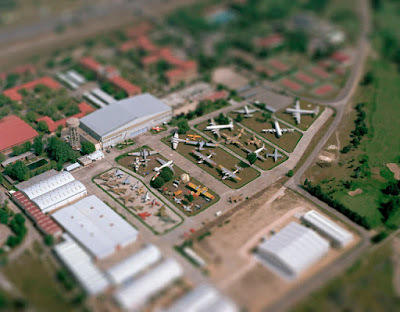 |
| www.digitalcameraworld.com |
The inverse square law measures the intensity of the flash in relation to the subject.
It states that for every unit of distance an object is away from the flashgun, the intensity of light it receives is 1/distance2.
 |
| www.photography.tutsplus.com |
Essentially, if the model is in very close proximity to the light source and they move a slight step in either direction, they'll be either massively under or overexposed as the light is of a higher intensity and more concentrated.
However if the model is further away from the light then they can move several steps in either direction and still be clearly visible as the light is more spread out because it is of a further distance from the subject.
I experimented by being close to the model and using a bright flash of 1/4, this made her very exposed.
As shown in the image above, the model and the background are very exposed. You can begin to see around the edges where the light from the flash does not quite fill the whole frame. The flash is very bright and concentrated as it does not have a large amount of distance to allow for the light to spread out.
For this photograph, I kept the camera on the same setting but stood further away from the model. After looking at the Inverse Square Law, I expected the model to be less exposed than she turned out to be. I thought that because the light from the flash spreads out more, it would not be so concentrated on her - however her upper body and a section of the backdrop behind her are still quite exposed. This leads me to believe that perhaps the other camera settings weren't what they should have been.
I think that using a direct flash in photography can be very effective. Being able to change the exposure in such a dramatic way could contribute to the connotations of the photograph and I would like to experiment further with this in my final project.
BOUNCE FLASH
This is used in order to avoid overexposure when using a direct flash. The flash head can be angled in order to reflect the light off of a wall, ceiling, or reflector connected to the flash unit. It gives a softer, diffused light that is flattering for portraits (particularly because it prevents red-eye).
I experimented this by angling the flashgun so that the light reflected off of the wall, I also used the diffuser attached to the flashgun to soften the light.
I don't think these pictures turned out particularly well because the wall on the right hand side is just overexposed and therefore only half of my models face is lit up nicely.


















